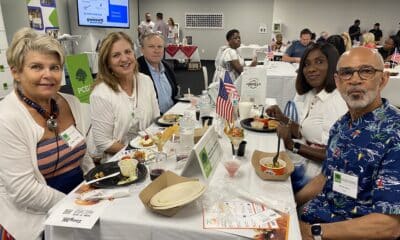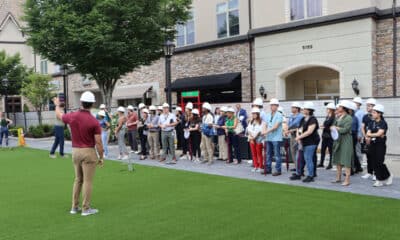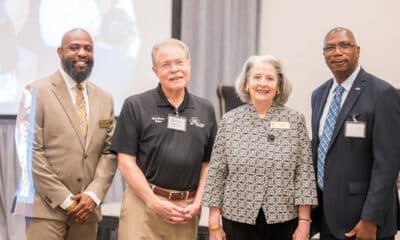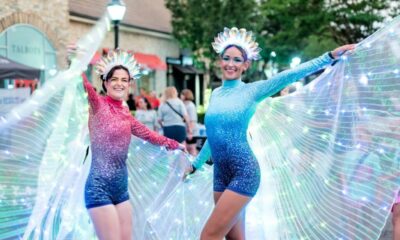Arts & Literature
Wesleyan Artist Market, Student Artists 2023 [Podcast]
Published
1 year agoon
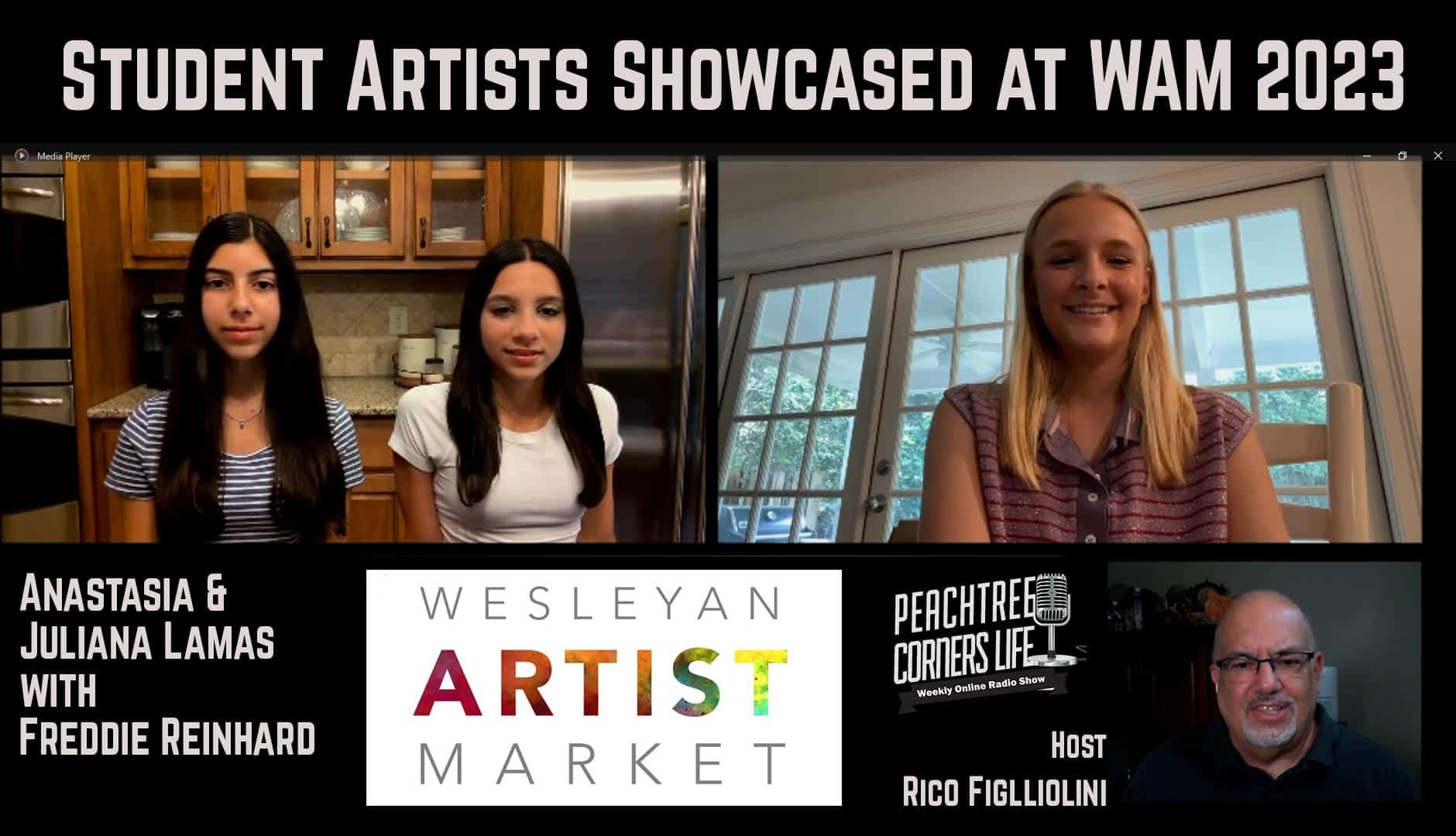
On this episode of Peachtree Corners Life we take a deep dive into the world of young artists at Wesleyan School, featuring three talented individuals: Freddie Reinhard, and Anastasia and Juliana Lamas. From digital art to painted oyster shells, these artisans have created unique, inspiring pieces that showcase their creativity and passions. We explore their inspirations, hobbies, and future aspirations, as well as their involvement in academics and extracurricular activities. With the Wesleyan Artist Market approaching (on April 28,29, 2023), this podcast is the perfect sneak peek into the exciting works these artists will be presenting. Don’t miss this chance to discover the next generation of artistic talent.
Resources:
Wesleyan Artist Market Website
“I HAVE A FASHION ICON WHO I’M JUST OBSESSED WITH, AND SHE REALLY INSPIRES ME. HER NAME IS REBECCA COHEN, AND SHE’S THE OWNER OF THIS BRAND THAT I LOVE CALLED LOVE SHACK FANCY. AND SHE’S SO GIRLY AND FEMININE, AND I JUST ADMIRE IT SO MUCH ABOUT HER. AND SHE JUST MADE THIS HUGE BRAND THAT EVERYBODY MY AGE AND AROUND MY AGE LOVES, AND I JUST WANT TO BE HER WHEN I’M OLDER, AND I JUST LOVE HER DISTINCT STYLE.”
freddie reinhard
Timestamp (Where to find it in the podcast):
[0:00:00] – Intro
[0:01:48] – About Anastasia and Juliana
[0:02:58] – About Freddie
[0:05:40] – Other Interests
[0:06:19] – The Creative Process
[0:10:50] – Presenting at The Artist Market
[0:12:34] – Inspiration
[0:14:35] – Difficulties of Mediums
[0:19:32] – Art Courses and Extracurricular Activities
[0:23:50] – Closing
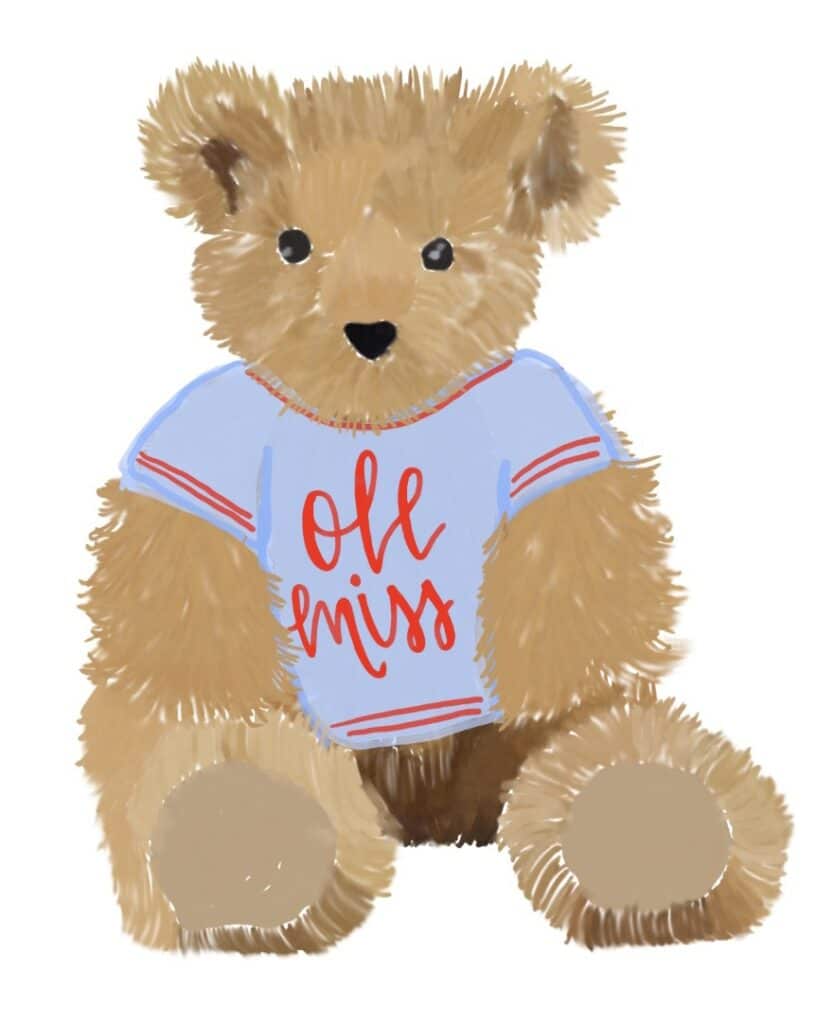


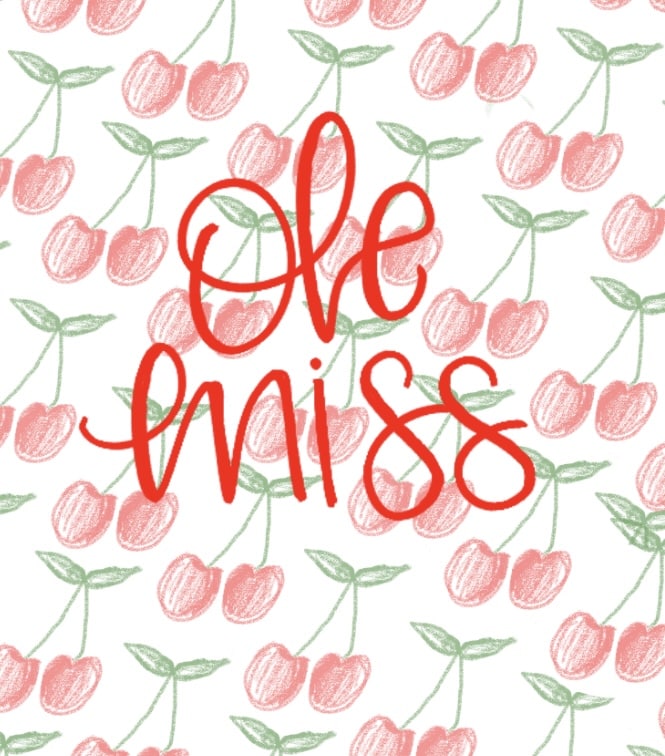
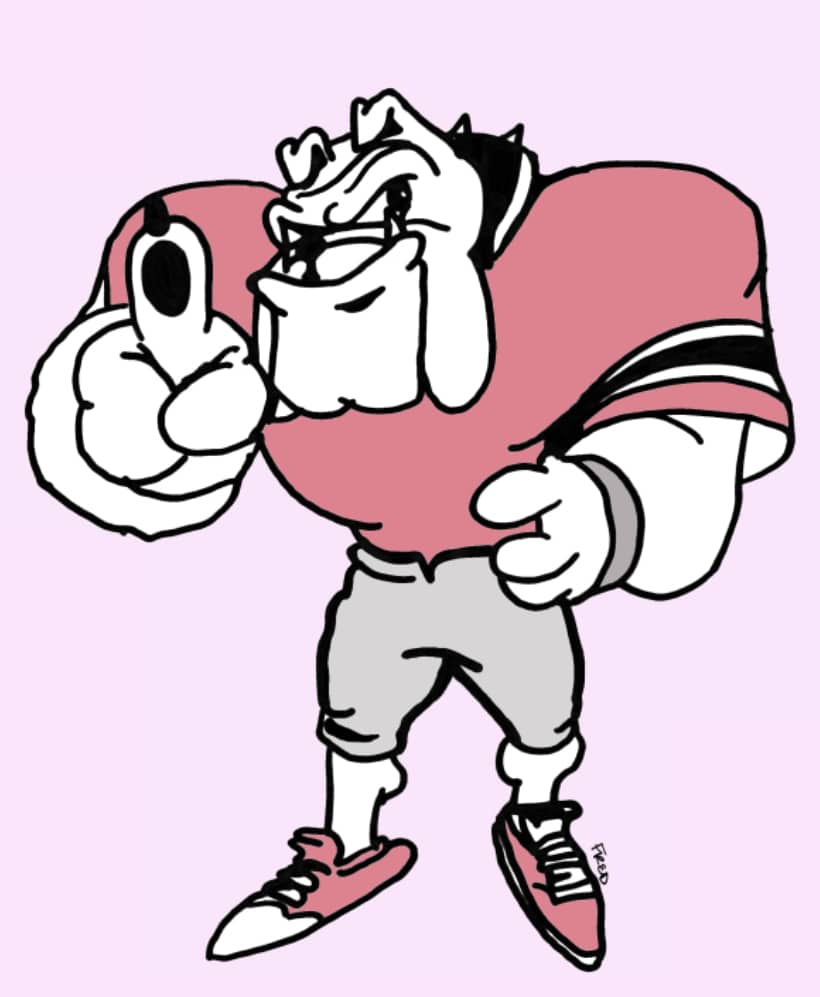

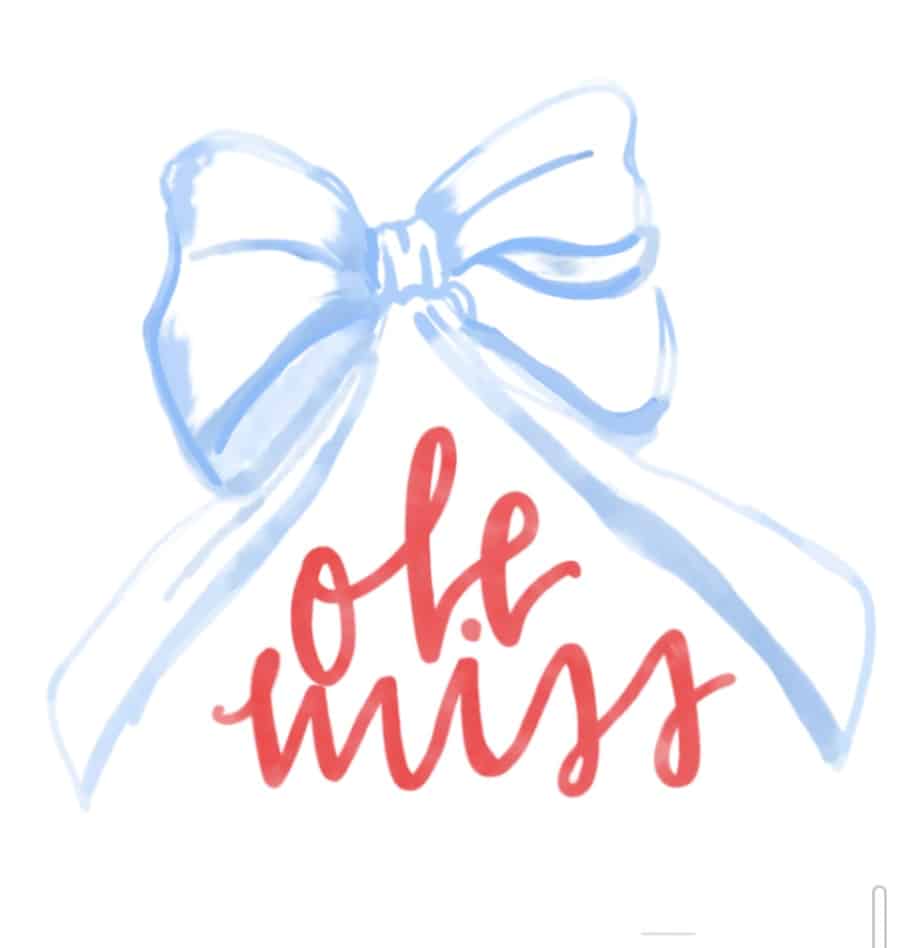
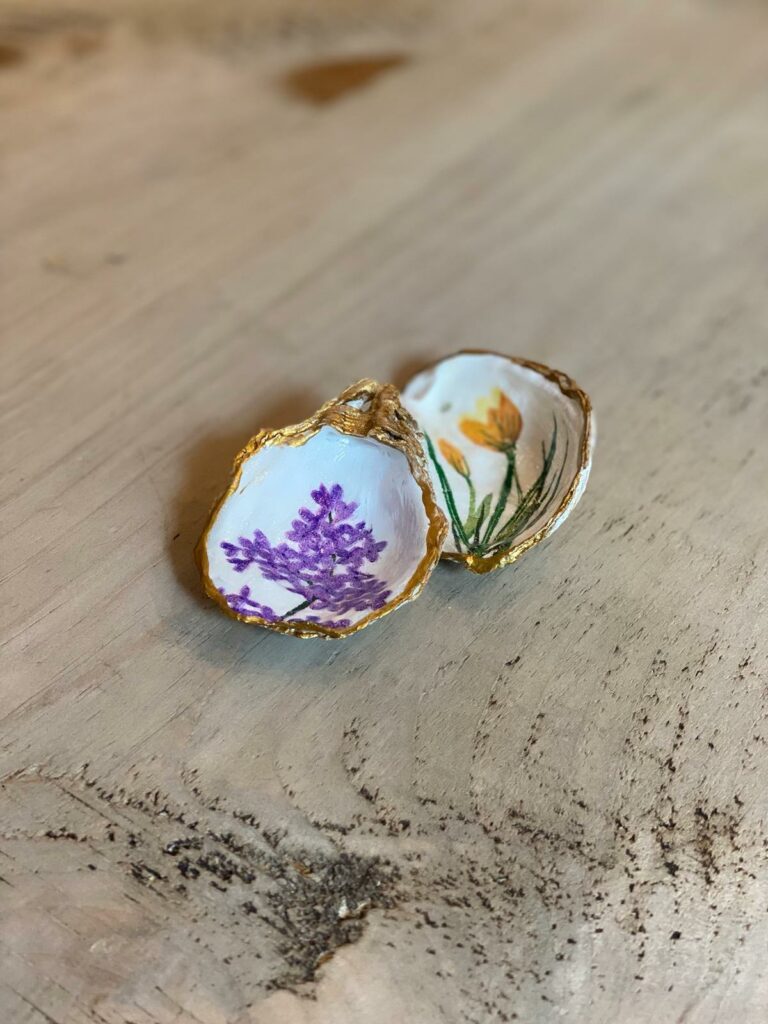
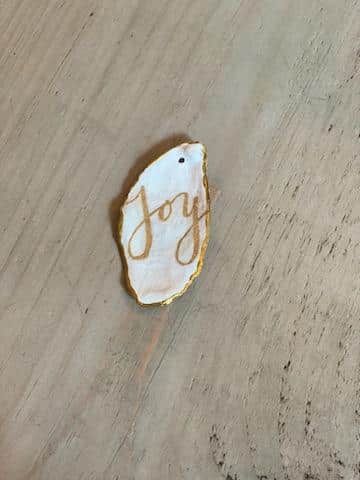
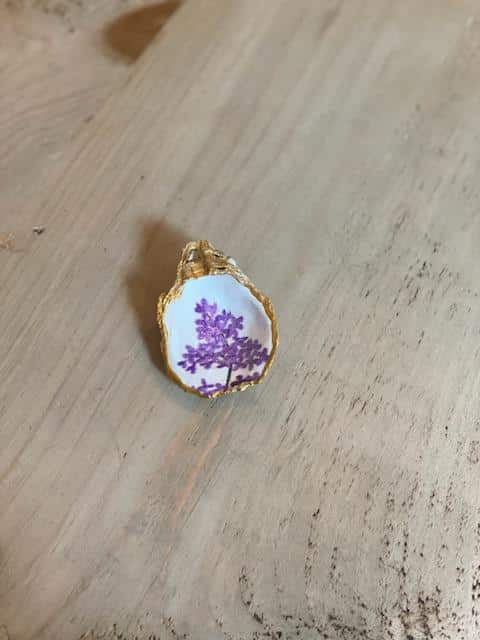
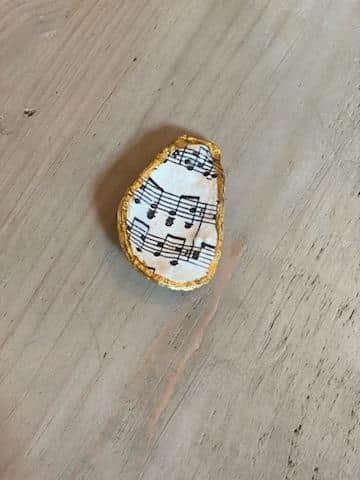
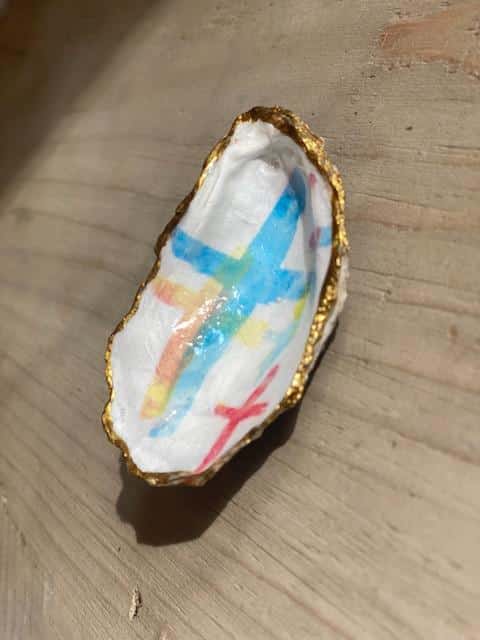
Podcast transcript:
[0:00:00] Rico Figliolini: Hi, everyone. This is Rico Figliolini, host of Peachtree Corners Life. And I have some special guests today. We are a sponsor of the Wesleyan Artist Market, and the guests I have here are student artists that are going to be presenting at the show this April. So let me introduce Freddie first. Hey, Freddie, thanks for joining us.
[0:00:18] Freddie Reinhard: Hi, how are you?
[0:00:19] Rico Figliolini: Good. Anastasia and Juliana, left and right, respective. Thanks for joining us.
[0:00:26] Anastasia Lamas: Thank you.
[0:00:27] Rico Figliolini: Appreciate it. So before we get right into it, I just want to say thank you to our corporate sponsor, EV Remodeling. I say corporate, but they’re a neighbor of ours, right? They live in Peachtree Corners. Eli is the owner of the place, and EV Remodeling does design to build and renovation work, and they’ve been around for a while, and they do great work. So check them out at EVRemodelingInc.com. They’re our sponsor and a great supporter of ours, so we appreciate them. So let’s hop right into it. You girls are exhibiting at Wesleyan Artist Market this April. I wish I had the dates in front of me, but do you remember the dates, Freddie?
[0:01:07] Freddie Reinhard: Yes, April 28 and April 29.
[0:01:10] Rico Figliolini: Great. Thank you. Just testing you on that one. Right? So we’re featuring it in the upcoming issue of Peachtree Corners Magazine as well. So we have three adult artists that we profiled in the magazine. So check that out. That’s coming out. Hitting the post office, I think Thursday. Mailboxes this weekend, hopefully. So check that out. But let’s get right into it. Juliana and Anastasia do artwork on oyster shells and a little different medium, right? They’re in 8th grade and 7th grade, and they’re working together on this project. So why don’t you two tell me a little bit about what it is that you do.
[0:01:48] Anastasia Lamas: So we take oyster shells from where we vacation at Hilton Head Island, and we paint them with a lot of different designs to be used as trinket dishes and decorations and gifts.
[0:02:04] Rico Figliolini: We’re going to flash one on. So when you paint these, I’m assuming you paint the background white, and then you use colors. What mediums, what actually are you using to do this?
[0:02:15] Anastasia Lamas: So first we bleach them to get any sort of, like, black spots off, and then we use acrylic paint. We do a few coats of that.
[0:02:25] Rico Figliolini: So what got you into that?
[0:02:28] Anastasia Lamas: We really loved the style, and I actually used them as nutcracker gifts for my dance friends as well, originally. And we thought that they would sell really well at the Artist Market.
[0:02:38] Rico Figliolini: Cool. Here’s another one that let’s pop that one in there too. So how many varieties do you have actually, that you’re using?
[0:02:46] Anastasia Lamas: Probably at the moment, probably seven. Like, seven-ish.
[0:02:49] Rico Figliolini: Cool. Freddie, you’re doing different stuff, so tell us a little bit about some of your work.
[0:02:58] Freddie Reinhard: So I have a button right here, like college buttons. And this one happens to be for Wesleyan. So they’re for, like, game days, and whenever you just want to support your team. They’re very popular at big SEC schools, especially. And then I’m also doing dorm room prints, so you can put, obviously, your dorm room, bathroom, wherever you want to show your team spirit. And I’m also making sweatshirts that have, like, a teddy bear design on them, wearing jerseys for Ole Miss Alabama.
[0:03:29] Rico Figliolini: So what medium? I know you said I believe you said before we started rolling on this that you use digital. So it’s digitally done? So what programs are you actually working in?
[0:03:39] Freddie Reinhard: I use Fresco. It’s, like, from Adobe, and it just is great. Definitely my go to. It’s pretty simple. I have, like, a button machine, and you just print out your pictures, and a pretty easy job to get done.
[0:03:55] Rico Figliolini: So some of the stuff, like, for example, Auburn, this would be on a button I’m assuming .
[0:03:59] Freddie Reinhard: Yes, that would be on a button.
[0:04:01] Rico Figliolini: Excellent. So leave that up for a minute. Freddie, have you done the Wesleyan Artist Market before, or is this the first time, or how long have you been doing it?
[0:04:16] Freddie Reinhard: No, this is my first time doing it.
[0:04:18] Rico Figliolini: Really?
[0:04:18] Freddie Reinhard: I thought it would just be a fun way for people to wear my art. I thought it would just be cool to see people wearing it. And I’m going to college next year, so I’m like, what better time to make college pins? I can even make some for my friends next year. And I just thought it was something unique that I knew would probably sell well.
[0:04:35] Rico Figliolini: Cool. Now, you’ve been, I understand correctly, you’re an AP art student at Wesleyan School?
[0:04:41] Freddie Reinhard: Yes.
[0:04:42] Rico Figliolini: And you’ve done about three and a half years of art in high school, I’m assuming. That’s a lot of years of art for a high school kid.
[0:04:48] Freddie Reinhard: It is.
[0:04:49] Rico Figliolini: Is this something that you want? Where do you want to take this when you go to college?
[0:04:54] Freddie Reinhard: Well, I’m hoping to do something in fashion, and so all this art is definitely helping me just kind of know my style in general, and I just love art. In the first place, I would like to do fashion, and I’m sure that if these buttons sell well, I’ll probably sell them in college. Yeah. It’s just something I’ve always loved.
[0:05:16] Rico Figliolini: Do you want to do a career out of this? What do you think your major would be in college?
[0:05:22] Freddie Reinhard: Well, currently I’m majoring in Southern Studies, which is, like, I can study the art of the south. So I really would like to tie in my Southern culture with my fashion. Hopefully, I could go into something fashion related would be my dream. All of this definitely helps out.
[0:05:40] Rico Figliolini: Absolutely. All right, let’s go to Anastasia and Juliana. I mean, middle school, 7th, 8th grade. Is that middle school? Yeah, that’s middle school. You’re way before college, right? Why don’t you share some of the interests that you two have? I mean, is art part of that, or do you have other interests besides that?
[0:06:00] Anastasia Lamas: I’m a dancer. I really do enjoy making art outside of dance and school. And Juliana?
[0:06:08 ] Juliana Lamas: I’m a gymnast, and so I really like that, and I really like just being creative and thinking of new ways to make something.
[0:06:19] Rico Figliolini: So when you’re doing the oysters and that artwork, are you both working on it at the same time? Do you collaborate? Does one of you say, no, I don’t think I like that, or how does that go? And do you sketch it out before you actually put it on the oyster?
[0:06:35] Anastasia Lamas: Yes, we have designs that we know we’re going to do on the shells, and we’ll put on the shell and do them together.
[0:06:44] Rico Figliolini: Cool. I guess there’s always someone a little bit more creative than the other right in a pair. Does anyone want to raise their hand? Which one’s more creative?
[0:06:55] Anastasia Lamas: I think we’re both creative in our own ways, like, different parts.
[0:07:01] Rico Figliolini: And where do you get your inspiration for what you do? Like, the artwork that you put on the shells, how do you come up with that?
[0:07:08] Juliana Lamas: For some of them, so we play the piano. So for one of them that we made, we put piano notes on it. I actually have it with me. And then Anastasia really likes flowers, so we made some with flowers on them, and then we wanted to incorporate something from Wesleyan into them. So it says Joy on it. It’s the joy motto. And then we have the ones that have the crosses on them.
[0:07:32] Rico Figliolini: Okay. Got a bunch of them up there now. Okay, so let’s go back to Freddie a little bit. So, Freddie, where do you find your creative process, your creative space, physical space or mind?
[0:07:53] Freddie Reinhard: Yeah, honestly, I do a lot of my drawings during class, which isn’t a good thing. I call it the doodlebug. My friends know it as that, and it’s just like, I’m in class, I can’t think of anything but just, like, drawing something on paper or my laptop. So, sadly, to my teachers, it’s definitely in class. And then also, I’ll draw when I get home from school, or if I just have some downtime, I’ll do some drawings then, and I get a lot of my inspiration from Pinterest. I see all these cute dorm room stuff, and I’m like, I could do that, but I want my Freddie spin on it. So I’ll do bows often. A lot of people know me for my bows because I just have bows in all my artwork. I just have practiced my handwriting for probably, like, four years now.
[0:08:47] Rico Figliolini: All right, well, the Pinterest, I’m surprised, actually. My daughter uses it. She’s 24. So is that something that you use a lot of? Do you create boards and put up your stuff that way too?
[0:09:07] Freddie Reinhard: Normally I’ll just go on there. If I need a pattern for this cherry background, maybe I saw something with cherries, and then I was like, that’s pretty cute. Or if I just see fun colors that I could incorporate in my art, I’ll do that. Or if I just need inspiration for something, I’ll definitely go there, because obviously it’s Pinterest. They have everything under the sun.
[0:09:30] Rico Figliolini: Okay. All right. Juliana, how about as far as inspiration? I think you said your family goes to Hilton Head, or is that correct? So when did that start? And I guess do you beach comb? Do you go searching for the shells on the beach, I’m assuming?
[0:09:51] Anastasia Lamas: Well, our grandparents owned some condos up at Hilton Head, and they’ve been going there since before we were born, definitely since my dad was a kid.
[0:10:00] Rico Figliolini: Okay.
[0:10:01] Anastasia Lamas: And so we kind of got the inspiration for the shells there, and we ordered them from a lady who cleaned them for us, actually, at Hilton Head. And we also sometimes when we go to restaurants there, we’ll ask the cook if they can give us some of their old oyster shells.
[0:10:21] Rico Figliolini: That’s ingenious. That’s a good way of recycling. That’s good. I would never have thought of that. My creative process runs a little different, but that’s cool that you did that. Okay, so now that you have your process and stuff, do you know where you’re going to be doing it at Wesleyan? Where you’re going to be presenting your products and stuff? Whoever wants to go first.
[0:10:46] Freddie Reinhard: Where I’m presenting them, do you mean, like, in Yancy?
[0:10:50] Rico Figliolini: Yeah, at the show. Well, at the show. Well, I guess people can find you when they go to the show. But will you have a variety of things at the show, I’m assuming?
[0:11:00] Freddie Reinhard: Yeah, I’m going to have my stand is going to be very obvious, I think. My mom’s trying to plan, like, a huge pink bow above my stand. So if you need to look for it, just look for the pink bow. And I’m going to have about 400 buttons there, 100 prints, 100 sweatshirts, I think, so there’s definitely going to be a variety. And I’m also taking commissions for the, I obviously can’t do every college I wish I could, but commissions for smaller colleges like Sanford and wherever else, I’m going to do commissions. So whoever’s going there, they can get buttons or prints or whatever they want.
[0:11:36] Rico Figliolini: Cool. So they can order from you, and then you’ll ship it. You can ship it later.
[0:11:40] Freddie Reinhard: Yes.
[0:11:41] Rico Figliolini: And Juliana and Anastasia, obviously, you’re going to have tons of product too, I’m imagining.
[0:11:47] Anastasia Lamas: We’re trying to do maybe ten to 20 of each design, but we’re definitely going to have made more by the time of the artist market. So far, it should start. I don’t know about you, but I want to keep selling them after the artist market when she goes to high school. Keep doing them.
[0:12:09] Rico Figliolini: Do you have an Instagram account? Do you have a place where you show off your artwork online?
[0:12:16] Anastasia Lamas: Not really. We all have just our personal Instagram account.
[0:12:20] Rico Figliolini: Got you. Freddie, the same for you, I’m assuming.
[0:12:23] Freddie Reinhard: I’ve decided that if these sell well, I’m going to make an Instagram account. So however well this art market goes, will decide if I post these on an Instagram account or not.
[0:12:34] Rico Figliolini: Got you. Okay, so a little bit about you all personally? A little bit, I guess. Let’s start with Freddie. Do you have a favorite artist or filmmaker or author that you’d like to share?
[0:12:51] Freddie Reinhard: Well, I have, like, fashion icon who I’m just obsessed with, and she really inspires me. Just so creative and so cool. Her name is Rebecca Cohen, and she’s the owner of this brand that I love called Love Check Fancy. I’m sure they probably know what that is. And she’s so girly and feminine, and I just admire it so much about her. And she just made this huge brand that everybody my age and around my age loves, and I just want to be her when I’m older, and I just love her distinct style.
[0:13:28] Rico Figliolini: And that’s called love. What is that called? Love Shack.
[0:13:30] Freddie Reinhard: LoveShackFancy.
[0:13:34] Rico Figliolini: Cool.
[0:13:34] Freddie Reinhard: She’s the queen of the world in my eyes.
[0:13:37] Rico Figliolini: Really? Okay. I haven’t heard of that one yet. My daughter tries to keep me abreast of things, but that one I haven’t heard. What about you two? Julianna, Anastasia. Do you have any artists or brands or styles that you follow that you like?
[0:13:54] Anastasia Lamas: Nothing in particular. I’m a giant bookworm, so I read, like, a lot. And a variety of genres.
[0:14:02] Rico Figliolini: What’s your favorite genre? Top two genres, I guess.
[0:14:08] Anastasia Lamas: Probably right now, fantasy and romance.
[0:14:10] Rico Figliolini: Okay. And your sister Juliana?
[0:14:14] Juliana Lamas: For me, probably someone I really love and look up to is Selena Gomez, because I’ve been seeing it on Instagram recently. I think she’s really inspirational and stuff.
[0:14:26] Rico Figliolini: She was the actress in Wednesday, right? On Netflix? Or am I thinking of someone else?
[0:14:33] Anastasia Lamas: Yeah, Jenny Ortega.
[0:14:35] Rico Figliolini: Yeah, that was Ortega. Sorry. All right, cool. So what do you want to share that we haven’t talked about yet, related to the artwork and stuff that you do, process or anything like that? What’s the most difficult thing? What’s the thing that you’ve done that you thought was great and all of a sudden you’re like, yeah, let’s try something else, and you start from scratch again. Let’s start with Freddie. She looks like she already knows something.
[0:15:05] Freddie Reinhard: Well, I think you’re probably asking something a little different, but through this button process, I thought it was going to be so easy. I thought I would just be, like, clamp and it would be done. My palms were sore after I was doing it. It’s actually hard work. And my mom kept trying to show me how to do it. We failed at, like, ten buttons in a row. So that’s definitely a lot harder than I expected. This whole artist market, I’m excited for it, but it’s definitely a lot of work.
[0:15:33] Rico Figliolini: But I know, yeah, the button machines are definitely I’ve done that before for political things, it’s not easy. What about you girls? Have you had stuff during your process that you found difficult or had to start all over again on?
[0:15:55] Anastasia Lamas: I think it’s just a lot of time to paint the shells with so many layers and just letting it all dry takes hours. Just keeping on going and going and going. And we’re trying to make all of them perfect. So that just takes a little bit of extra time. And then also, since we’re kind of working together on this, we both have our own different styles, so we kind of intervene and we both like, oh, but I think it looks better like this, better like that, or whatever.
[0:16:32] Rico Figliolini: Did you ever decide to okay, this shell is mine. I’m going to put my initials on it because do you do individual shells like that? This one’s my creative thing.
[0:16:43] Anastasia Lamas: Not really. I really enjoy doing the cross oyster shells, though, so I usually stick to those.
[0:16:46] And I really like doing the notes, the music notes and the joy one. So we each have our shells that we work on.
[0:16:59] Rico Figliolini: Okay. All right, Freddie, when you’re doing the work that you’re doing, I know you’re using digital, so is that easier to do that? I mean, when you’re creating patterns and all that? I imagine some of the process is easier, but also that gives you a little bit more creative space, maybe.
[0:17:15] Freddie Reinhard: Well, I prefer doing lettering on paper. I still enjoy it because it’s easier to just erase things and clear. But if I could, I would definitely prefer paper for just doing my lettering. But for the pattern and such. Like the cherries, I just have to draw one and then just duplicate a bunch. So it’s way easier than if I had to do every single cherry. And then for these prints, it’s so much easier when I can just kind of just fill this hat in with one click instead of, of course, drawing in the whole thing. So in some ways it’s easier. Other ways I feel, if it was all handmade, if it was all made on paper, I think it would have more of like I don’t know, I feel like it has your hand more in it. As my art teacher would say, you could tell it’s from me because you could tell it’s drawn on paper. So that aspect I kind of miss, but definitely easier for math, product, to do digital.
[0:18:16] Rico Figliolini: Have you ever thought about I know 3D printing is like, the big thing now, and I’ve seen artists use 3D printing, actually. Have you thought about that?
[0:18:25] Freddie Reinhard: No, I haven’t. I know we have a few at Wesleyan, but I didn’t even get into consideration. That is a really good idea, that would be really cool. Maybe I will start trying to figure that out.
[0:18:36] Rico Figliolini: It doesn’t take much on some of that. Some of that is just fed these templates. But you can feed your creativeness into that template. You can customize some of these templates. So that’s just another avenue of art. Same thing. I guess for that you could 3D print shells, but then what’s the point, right? I guess those shells might have been out in the ocean for like, 100 years before they got to you or whatever. However long. So there’s some history to that, maybe even that’s unknown to anyone. Have you ever thought about doing your work, girls, on other materials besides shells?
[0:19:20] Anastasia Lamas: We haven’t really. We’ve mostly just stuck with the oyster shells.
[0:19:26] Rico Figliolini: Okay.
[0:19:27] Anastasia Lamas: Yeah, it would be interesting to see how it would work on other mediums.
[0:19:32] Rico Figliolini: Yeah, probably. Well, I’m assuming you’re taking art courses or you’ve taken art courses at Wesleyan?
[0:19:41] Anastasia Lamas: We were both in digital art last semester, and we both really enjoyed that.
[0:19:45] Juliana Lamas: I took it in fifth grade and 6th grade. Just normal art. And then I did digital art, and now I’m in technology class.
[0:19:57] Rico Figliolini: Cool. And are you liking it? Is it everything you thought it would be? What about Freddie? Freddie, what about you? I mean, you’ve been in three and a half years of AP Art course. Because of that, you probably have done different mediums, different subjects and stuff. How’d that go? And did that help with what you’re doing now? Any of that?
[0:20:18] Freddie Reinhard: Yeah, I’m going to have to think back to freshman year. I think it was 3D art, and I got stopped midway because of COVID. But I like that, it’s not my thing. I enjoyed it because it’s fun to do, but I don’t know, I just prefer doing things too deep. And then I’ve been on digital art as well, which I love. That was like so much fun. And so from then I was like, yeah, I think this is my thing. So I started getting into that. And I do some digital art on my AP Art stuff now. I don’t know, I’ll doodle on some of my pictures and I do a lot of mixed media, so that also helped with my creativeness, I guess. Too much to count.
[0:21:04] Rico Figliolini: And doodling in the classrooms. That helps, too, a little bit.
[0:21:09] Freddie Reinhard: Yes, definitely does.
[0:21:11] Rico Figliolini: Let’s make sure the teachers don’t hear that. I’ve covered quite a bit with you three. If you want to share anything else with the audience that will be listening to this, want to start that with Freddie and we’ll go the other way.
[0:21:29] Freddie Reinhard: I don’t have too much more to share, but I’d say to you two girls that you should definitely take AP Art because it is just such a great way to really learn your style and just do so much stuff you’ve always wanted to do. And it just helps with who you want to be as an artist, definitely.
[0:21:47] Rico Figliolini: Have you done any, the girls do dance and gymnastics. Have you done anything along those lines? I mean, that’s one creative aspect. Right. Have you done anything similar?
[0:21:57] Freddie Reinhard: Well, this year I actually did the musical for the first time. I’ve never done musical theater, but it was just me and my two best friends, and so that was just a great experience. Overall, we had the best time, and I’ve never been in an environment like that, and it was just so much fun. And then right now, I’m doing lacrosse, and in the fall, I do cross country.
[0:22:16] Rico Figliolini: Wow. Okay. Busy schedule. Sounds good. What about Juliana and Anastasia? It’s gymnastics and dance?
[0:22:28] Anastasia Lamas: Our main things are gymnastics and dance, but we do other sports too. She’s in the musical, and I do lacrosse and cheerleading and all that stuff.
[0:22:41] Rico Figliolini: It’s amazing how much activity girls have. I don’t know how, so what do you do to unwind then? I mean, you have schoolwork, you have artwork, you have sports. What is it that you do that’s not associated that way, to sort of do something different? Anything?
[0:23:03] Freddie Reinhard: For me, it’s honestly just, like I really get my energy from my friends, so I’ll definitely try to hang out with my friends in the little free time that I have, because they just bring me so much joy. And also hanging out with my parents since I’m going to college next year. I know I’ve got to savor these last few months, so I just make sure if I’m home during a school night, I’ll definitely go and just hang out with them and talk with them.
[0:23:31] Rico Figliolini: That’s cool. That’s a good daughter. Thank you. My kids do that. What about you girls? Juliana? Anastasia?
[0:23:39] Anastasia Lamas: Well, we try to do stuff as a family. Like family movie nights and stuff on weekdays and weekends when we aren’t super crammed schedule.
[0:23:50] Rico Figliolini: Yeah. Wesleyan kids, Great Atlanta Christian, The kids that I’ve interviewed and stuff always busy. Norcross high school. I don’t think any kids that I’ve interviewed have had more than a night or two free because of academics and sports and everything else. They’re there. But you know what? Your future is secured when you do that. I think you develop a different way of looking at life and become more successful that way. So glad you three were able to spend some time with me. This took a little time to get this together. Mostly my fault on the scheduling, but I appreciate you three showing up and doing this interview with us.
[0:24:32] Freddie Reinhard: Yeah, it was awesome.
[0:24:34] Rico Figliolini: Thank you. Hang in there with me for a minute. I just want to say thank you to everyone that’s been watching this. So the Wesleyan Artist Market is at the end of this month, and you just Google Wesleyan Artist Market, and you’ll be able to find the schedule and everything else from there. Follow them on Instagram there are going to be 75 artists from around the country there as well, besides the student artists. So there’s a lot of stuff, a lot of mediums. Check out the latest issue of Peachtree Corners magazine. You’ll see three of the artists of the 75 that will be there. It’s some good feature stories. And there’s a podcast interview also with Jennifer Keim, another adult artist that is going to be showing there. So thank you. And thank you to EV Remodeling for being a sponsor of ours. So thank you all. Take care.
Related
Around Atlanta
City Springs Theatre Company Presents the Hit Musical Jersey Boys
Published
3 weeks agoon
July 3, 2024
The megahit musical Jersey Boys makes its regional premiere in City Springs Theatre Company’s (CSTC) first-ever, five-week run at the Byers Theatre in Sandy Springs.
Directed by Atlanta’s-own Shane DeLancey, and choreographed by Meg Gillentine, Jersey Boys tells the rags-to-riches story of Frankie Valli and The Four Seasons. The show details their remarkable journey from the streets to the top of the charts, to their 1990 induction into the Rock and Roll Hall of Fame.
Leading the cast of Jersey Boys is Haden Rider as Frankie Valli. Rider is a City Springs Theatre Company veteran, with recent roles in both Legally Blonde (Emmett) and Fiddler on the Roof (Perchik).

Presented by Resurgens Spine Center, Jersey Boys runs from July 12 through August 11, and shines a special spotlight on home-grown talent, as the show’s four leading men are all Atlanta-area residents.
With phenomenal music, memorable characters and great storytelling, Jersey Boys follows the fascinating evolution of four blue-collar kids who became one of the greatest successes in pop-music history.
“City Springs Theatre Company is very proud to be the first in the southeast region to present Jersey Boys,” said CSTC Artistic Director and Tony Award-winner Shuler Hensley. “Our audiences have been asking for this particular show since we opened. The production is truly stacked with talent onstage and off, and we’re pulling out all the stops to bring audiences an experience that will rival any previous version of the show.”
Jersey Boys premiered at the La Jolla Playhouse in 2005, prior to its 13-year Broadway run, from 2005 to 2017. There have been productions of the show in Las Vegas, UK/Ireland, Toronto, Melbourne, Singapore, South Africa, the Netherlands, Japan, Dubai and China.
Jersey Boys features a book by Marshall Brickman and Rick Elice, with music by Bob Gaudio, and lyrics by Bob Crewe.
Individual tickets to see Jersey Boys are on sale now ($42 – $108), with discounts for seniors, students, groups and active and retired military personnel.
CSTC’s Box Office is open Monday through Friday from 10:00 a.m. – 5:00 p.m.
Call 404-477-4365 or visit CitySpringsTheatre.com for more information.
This production contains adult language and is recommended for mature audiences.
Performance schedule:
Friday, July 12 | 8:00 p.m.
Saturday, July 13 | 2:00 p.m. & 8:00 p.m.
Sunday, July 14 | 2:00 p.m. & 7:30 p.m.
Tuesday, July 16 | 7:30 p.m.
Wednesday, July 17 | 7:30 p.m.
Thursday, July 18 | 8:00 p.m.
Friday, July 19 | 8:00 p.m.
Saturday, July 20 | 2:00 p.m. & 8:00 p.m.
Sunday, July 21 | 2:00 p.m. & 7:30 p.m.
Tuesday, July 23 | 7:30 p.m.
Wednesday, July 24 | 7:30 p.m.
Thursday, July 25 | 8:00 p.m.
Friday, July 26 | 8:00 p.m.
Saturday, July 27 | 2:00 p.m. & 8:00 p.m.
Sunday, July 28 | 2:00 p.m. & 7:30 p.m.
Tuesday, July 30 | 7:30 p.m.
Wednesday, July 31 | 7:30 p.m.
Thursday, August 1 | 8:00 p.m.
Friday, August 2 | 8:00 p.m.
Saturday, August 3 | 2:00 p.m. & 8:00 p.m.
Sunday, August 4 | 2:00 p.m. & 7:30 p.m.
Tuesday, August 6 | 7:30 p.m.
Wednesday, August 7 | 7:30 p.m.
Thursday, August 8 | 8:00 p.m.
Friday, August 9 | 8:00 p.m.
Saturday, August 10 | 2:00 p.m. & 8:00 p.m.
Sunday, August 11 | 2:00 p.m. & 7:30 p.m.
Related
Arts & Literature
Local Students Show Off Their Artistic Creations
Published
2 months agoon
June 2, 2024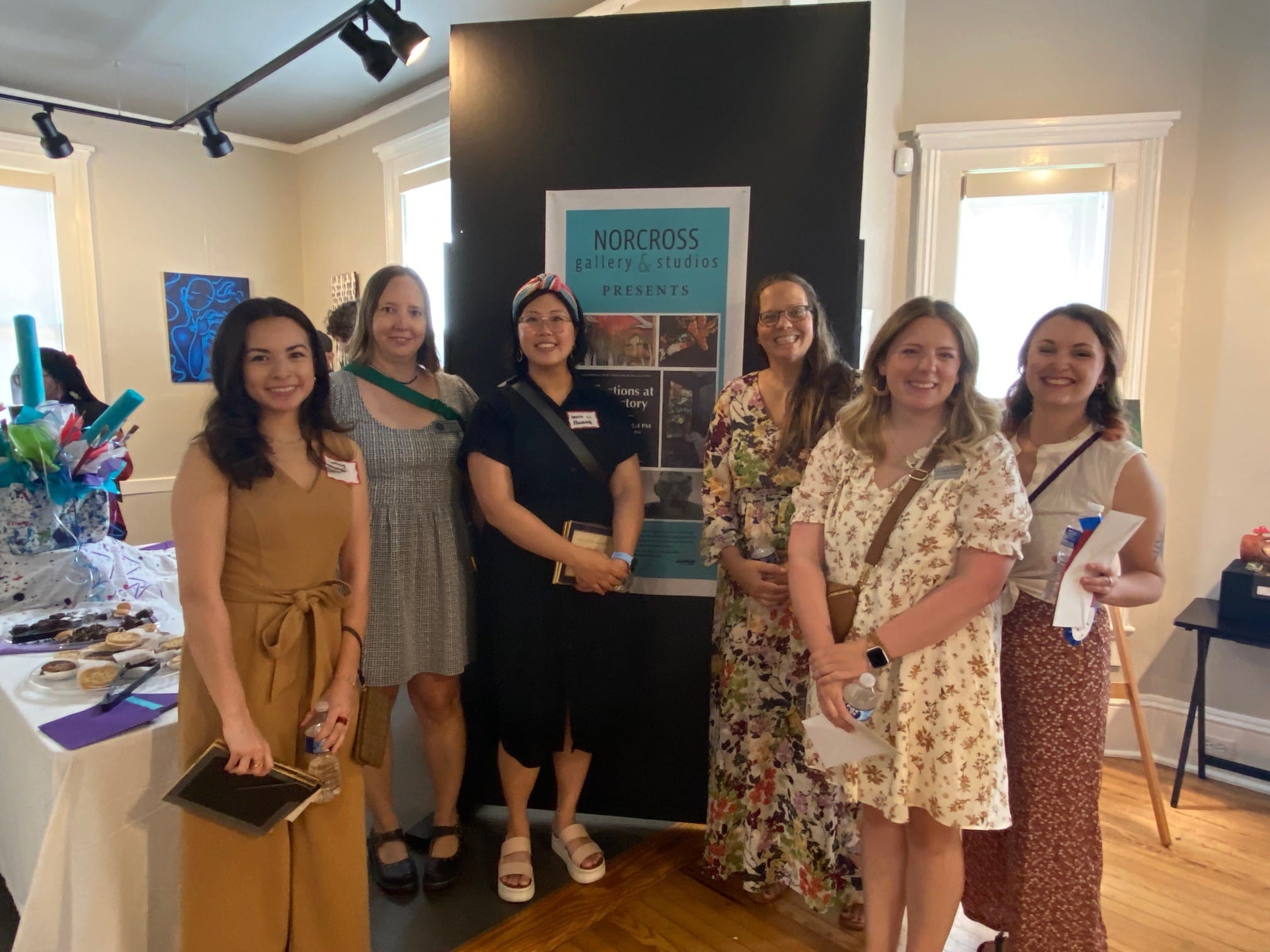
From May 11 through May 18, the Norcross Gallery & Studios kicked off a fantastic exhibition, Reflections at Rectory, which showcased the works of 36 rising stars: AP and IB art students from our local high schools.
The opening reception celebrated their creativity and dedication. Gallery director Anne Hall presented a dozen awards generously sponsored by the community, a testament to the local support for these young artists.
One prestigious award, the Terri Enfield Memorial Award, holds special significance.
Established by Terri’s daughters, it recognizes not just artistic excellence, but also leadership, work ethic and the spirit of collaboration. Last year’s winner, Aidan Ventimiglia, even played a part in selecting this year’s recipient Jasmine Rodriguez.
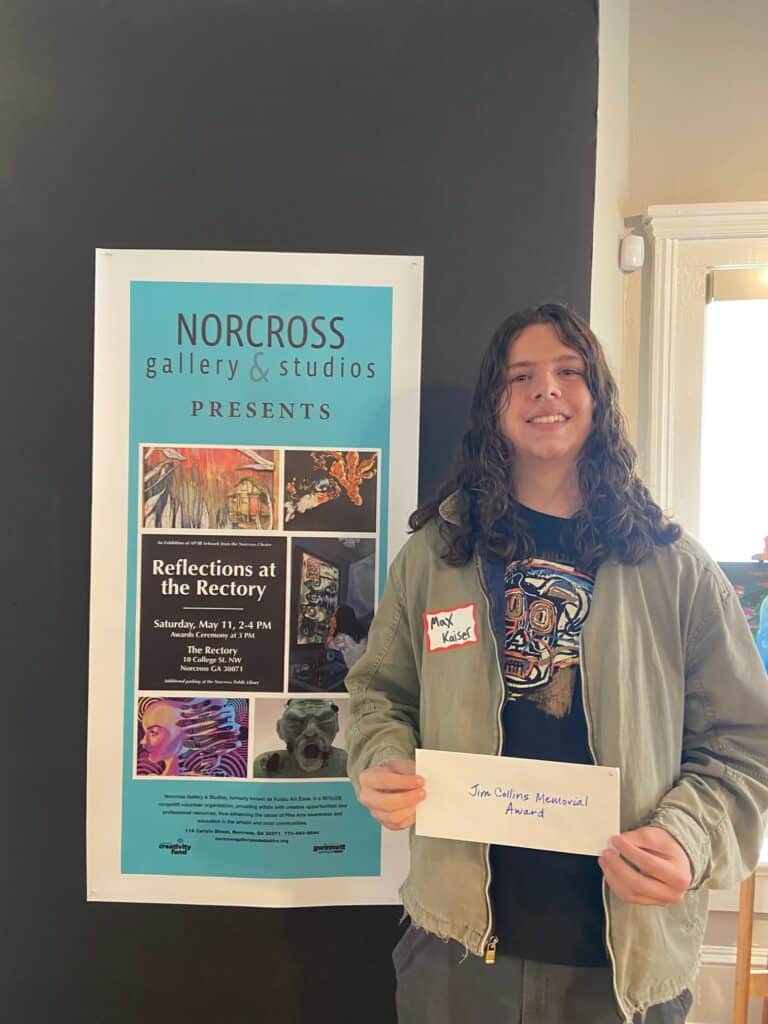
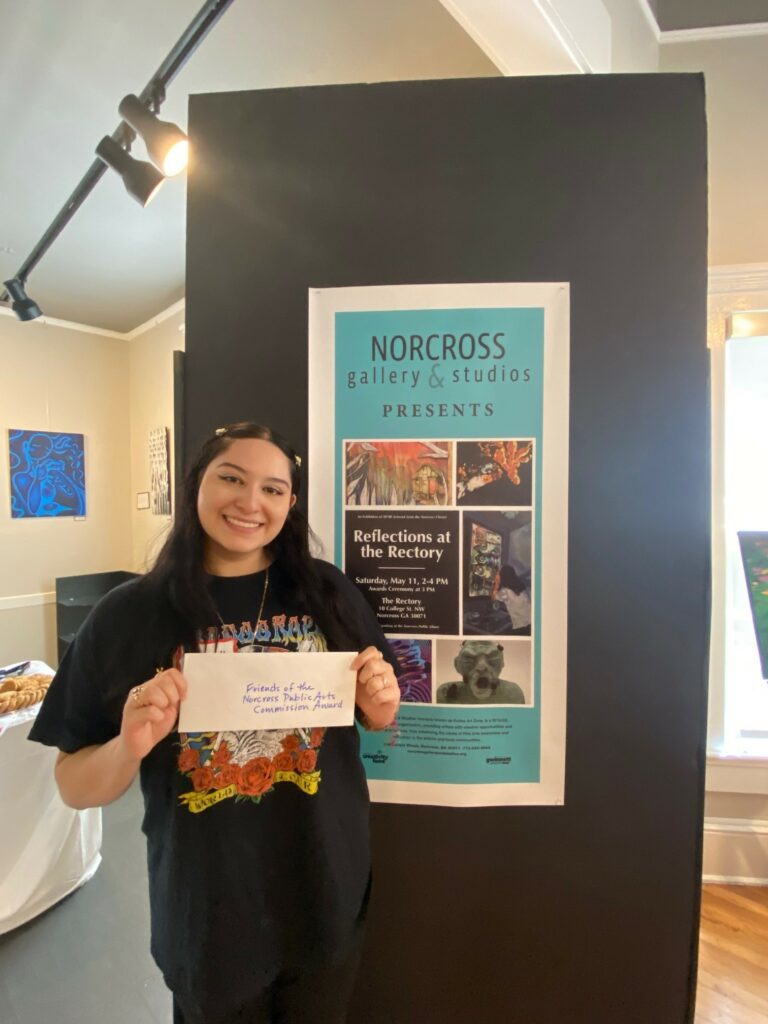
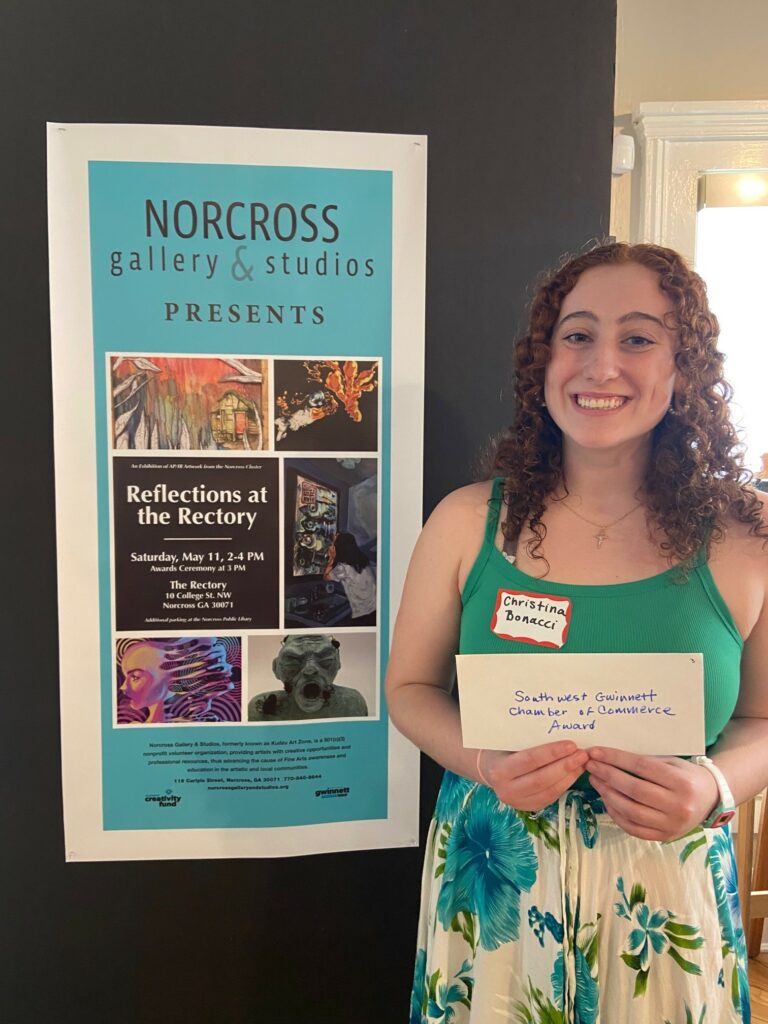
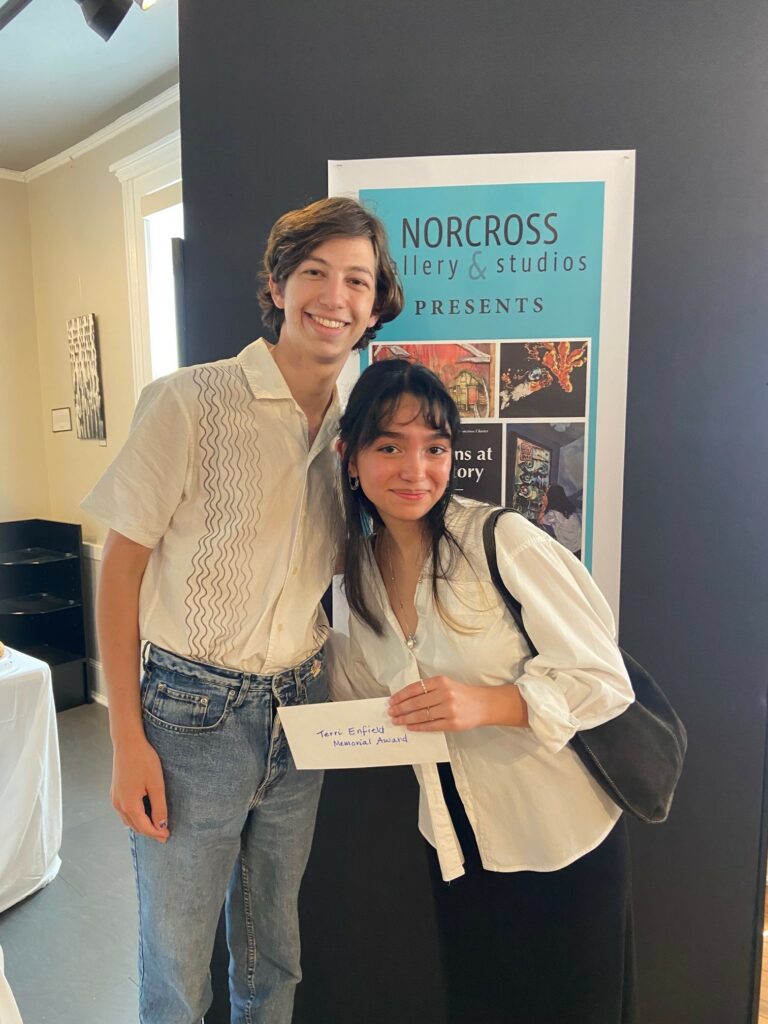
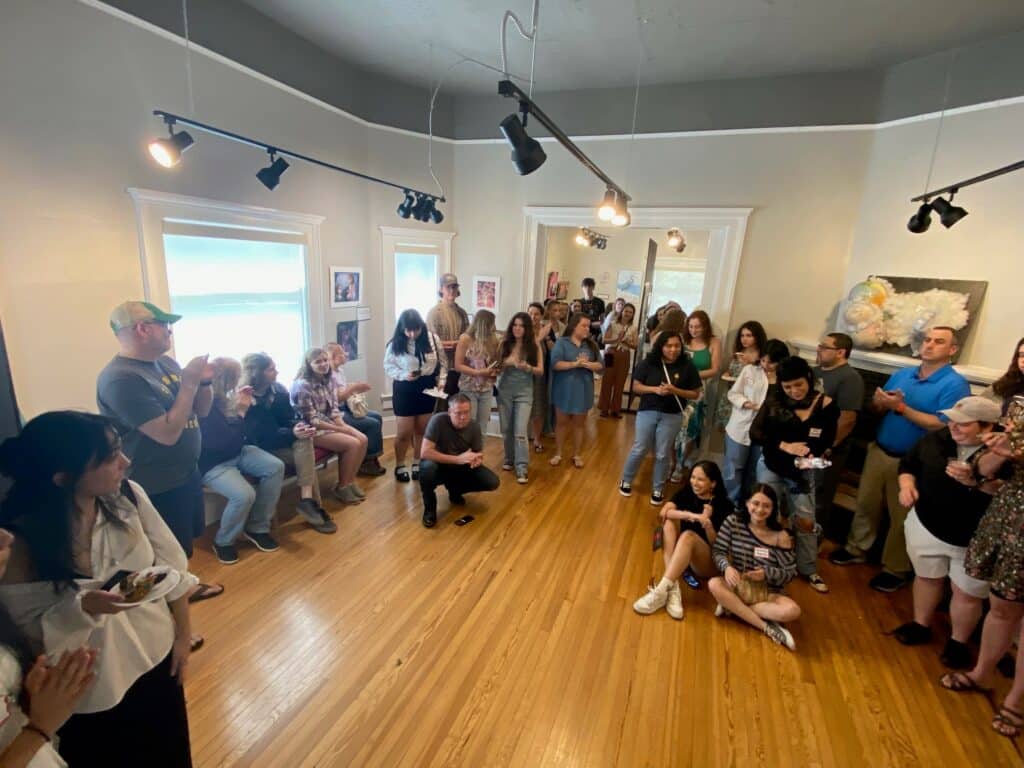
Congratulations to all the student artists.
Students in the second annual Reflections at the Rectory exhibit
Norcross High School:
- Gustavo Benumea-Sanchez
- Maycol Cruz Padilla
- Dorie Liu
- Harlet Martinez Castro
- Paulina Santana
- Gisela Rojas Medina
- Clare Fass
- Ava Netherton
- Ubaldo Diaz
- Katia Navas-Juarez
- Mariah Ingram
- Arisdelcy Juan
- Max Kaiser
- Dani Olaechea
- Christina Bonacci
- Diana Ortiz Ventura
- Katie Yerbabuena-Padierna
Paul Duke High School:
- Adamu Abdul-Latif
- Salma Noor Alabdouni
- Samrin Zaman
- Camryn Vinson
- Liz Damian
- Cecelia Berenguer
- Jasmine Rodriguez
- Angelina Bae
- Dahyana Perez
- Jonah Swerdlow
- Kyra Allicock
- Anni Brown
- Kaleb Fields
- Destiny Jones
- Gabriela Leal-Argueta
- Madisyn Mathis
- Ashley McDonough
- Ahtziri Pinones
- Alondra Valiente-Torres
Related
Arts & Literature
Book, TV and Podcast Recommendations for this Summer
Published
2 months agoon
June 2, 2024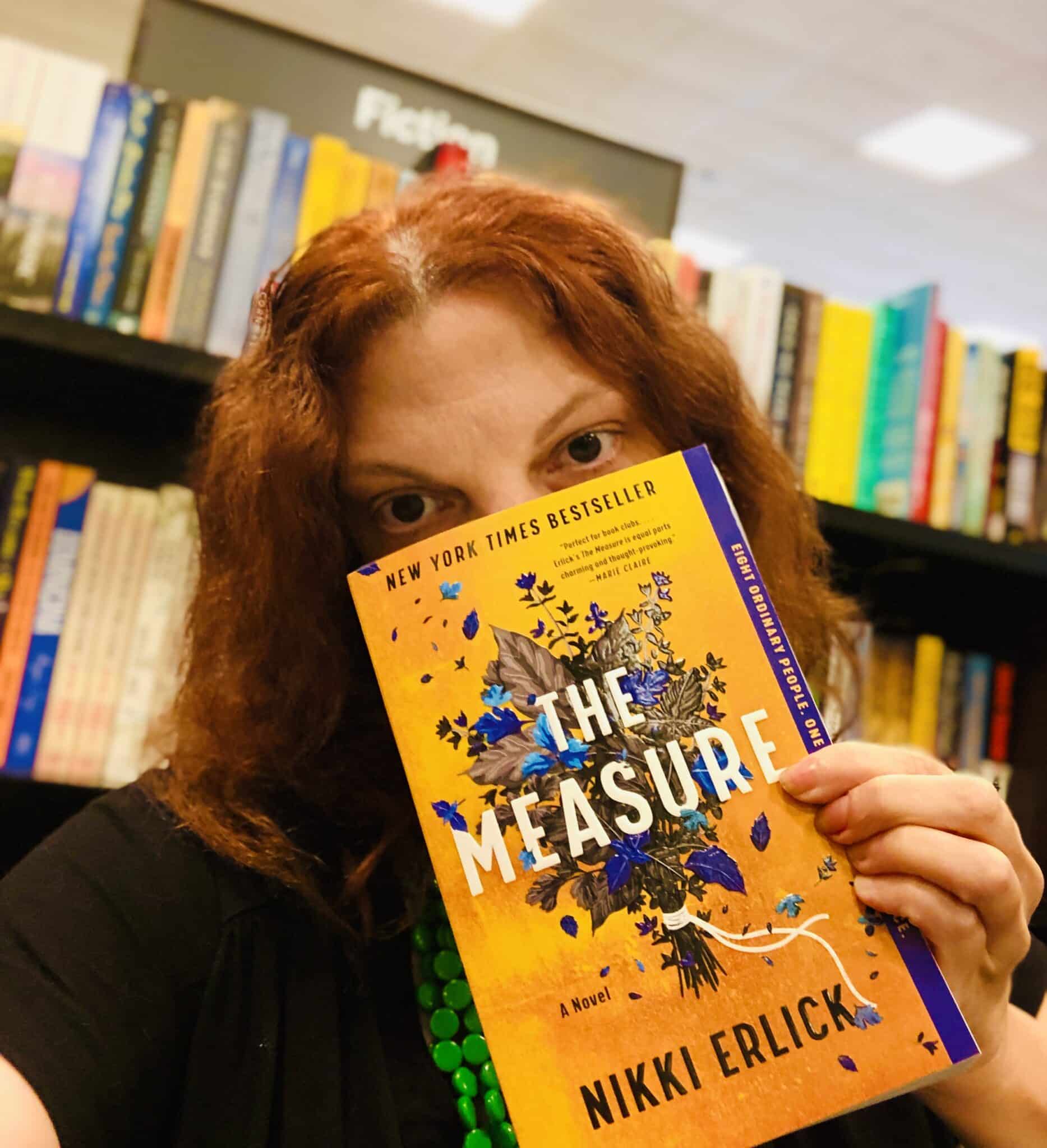
Beat the heat this Summer with a good book, show or podcast. This year, Peachtree Corners Magazine received over 30 recommendations from more than a dozen city residents. There is something for everyone on this list, so let’s dive in.
Machine Made: Tammany Hall and the Creation of Modern American Politics
by Terry Golway
This 400-page book offers readers a comprehensive and insightful exploration of one of the most influential political machines in American history. It provides valuable lessons and perspectives on the intersection of politics, power and society.
Turning Point: The Bomb and the Cold War
Stream on Netflix
This nine-part series offers viewers a thought-provoking exploration of one of the most consequential periods in modern history. It provides deep insights into the complexities of nuclear politics and the enduring legacy of the Cold War.
Fareed Zakaria GPS
Listen on CNN Audio
This podcast comprehensively examines foreign affairs. It enhances a listener’s global awareness, fosters critical thinking and sheds light on complex issues shaping our world today.
— Brian Johnson, City Manager for Peachtree Corners
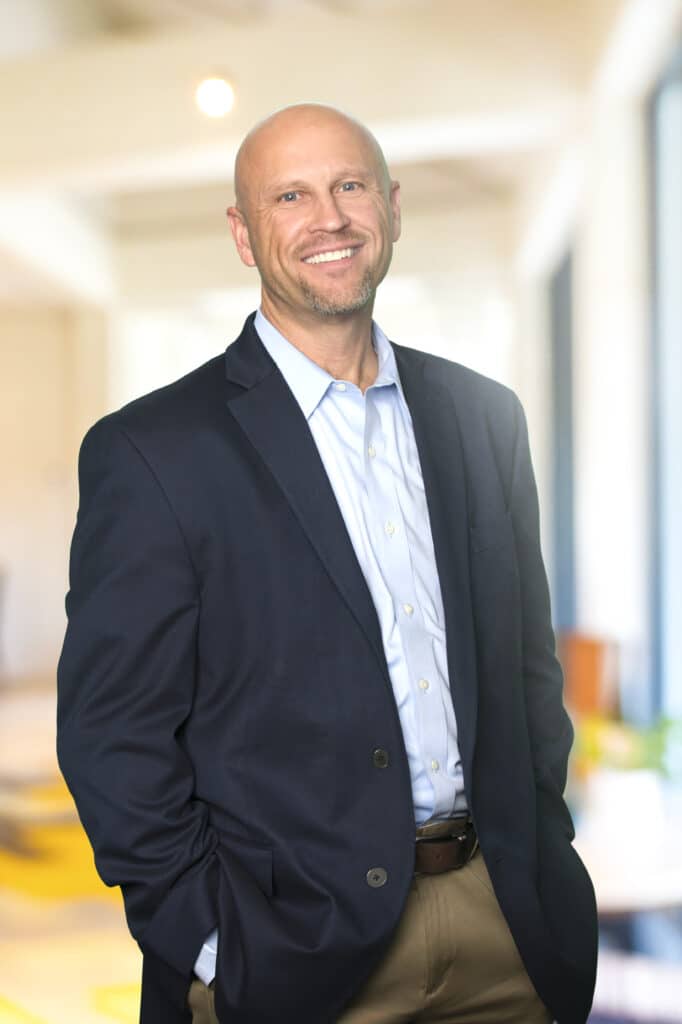
Empowering Nurses Through Self-care: Unleashing Your Potential and Thriving in the Nursing Profession
by Audrey Boyce
Audrey Boyce offers a practical guide to help nurses find balance and fulfillment in their personal lives and professions. With a comprehensive overview of self-care strategies, this book is essential for nurses looking to recharge, reduce stress and increase job satisfaction.
The Go-Giver, Expanded Edition: A Little Story About a Powerful Business Idea by Bob Burg and John David Mann
The Go-Giver tells the story of Joe, an ambitious young man striving for success. Through Joe’s journey, this book imparts powerful lessons about the significance of giving, collaboration and building meaningful relationships in achieving success.
Special Ops: Lioness
Stream on Paramount+
The protagonist, Joe, attempts to balance her personal and professional life as the tip of the CIA’s spear in the war on terror. The Lioness Program enlists Cruz to operate undercover alongside Joe among the power brokers of State terrorism.
Money and Wealth
Listen on Apple Podcasts
In Money and Wealth, John Hope Bryant provides valuable insights into financial literacy and wealth-building strategies. With a clear and accessible approach, Bryant aims to empower listeners with practical knowledge to achieve financial stability and success.
— Bobby Cobb, CEO of Cobb Global Outreach Inc.
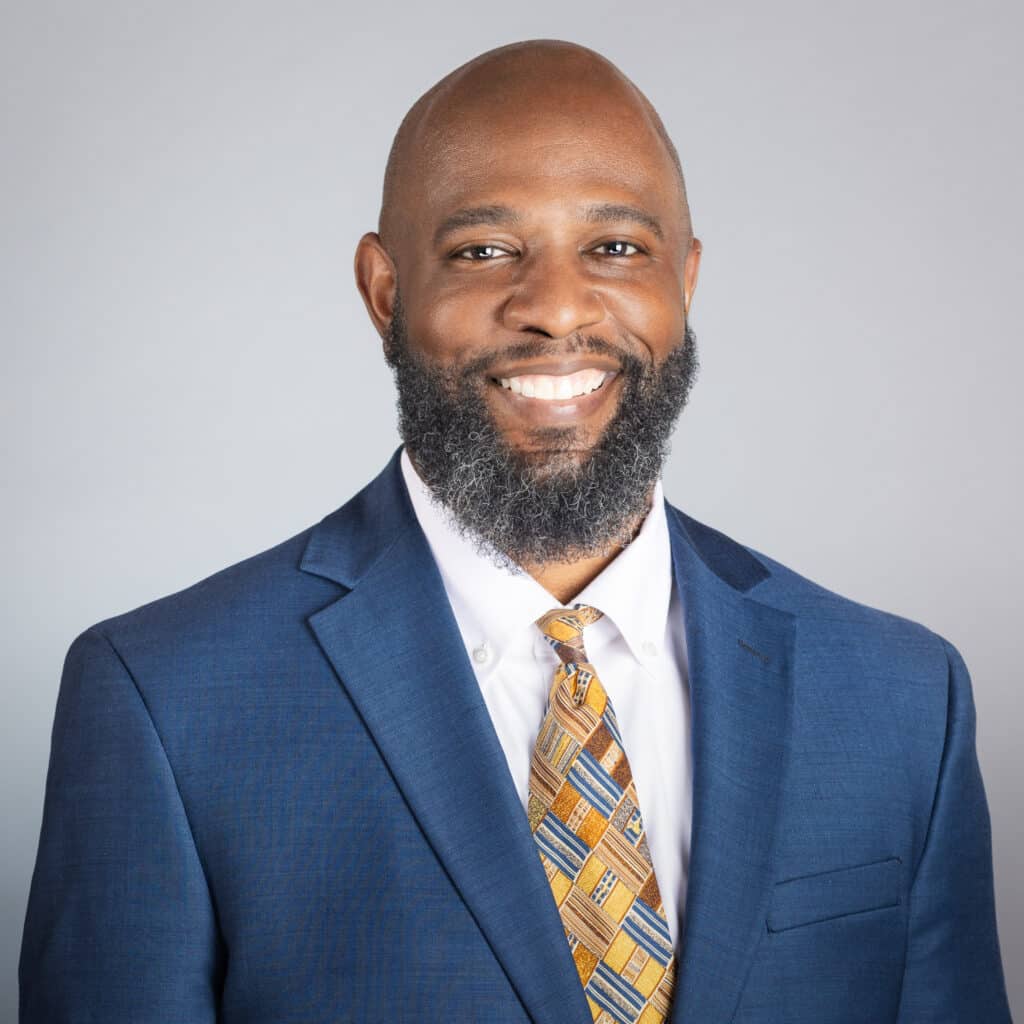
1984
by George Orwell
The new audio drama of George Orwell’s 1984 on Audible is nothing short of phenomenal. With a full cast of film stars and sound effects in stereo, you’ll feel like you’re actually in Oceania, being watched by Big Brother.
— Jill Tew, local author of the forthcoming young adult dystopian novel The Dividing Sky
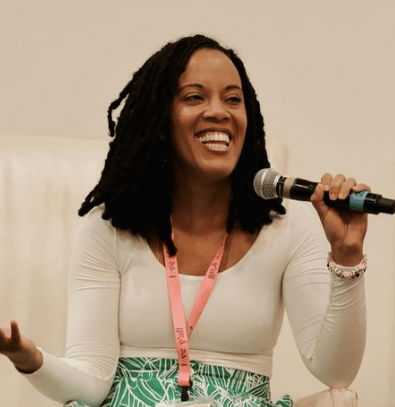
Enter Ghost
by Isabella Hammad
I recently read this and loved the writing. The author plays around with formatting between narrating the story and switching to the format of a play to show the dynamics between characters.
— Ruwa Romman, Georgia State Representative
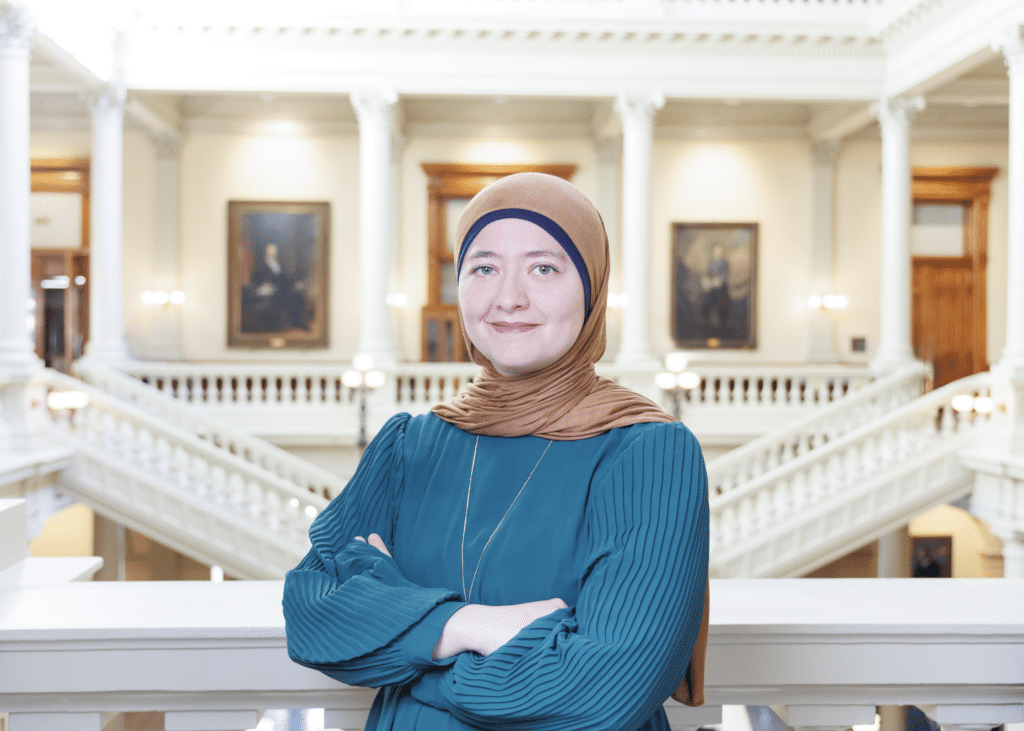
Seeing Eye Girl
by Beverly Armento
Beverly Armento’s account of her life in Seeing Eye Girl is truly remarkable. I was captivated by her story of resilience, strength and, ultimately, forgiveness.
— Erin Griffin, Norcross High School Foundation for Excellence Co-President
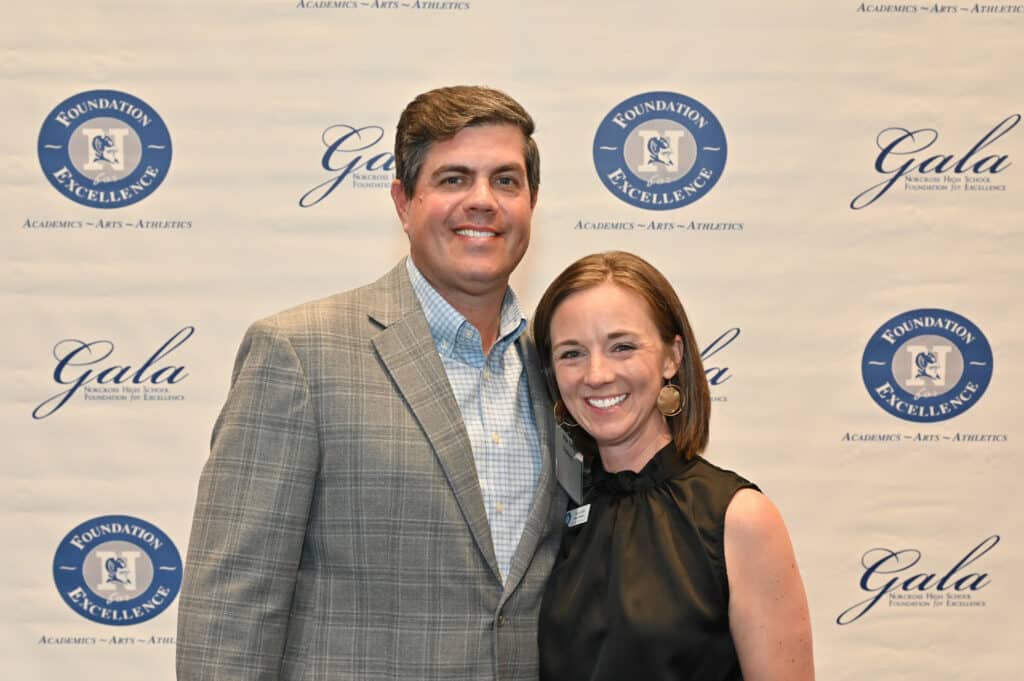
Never Enough: When Achievement Pressure Becomes Toxic – And What We Can Do About It
by Jennifer B. Wallace
This book presents research on how to raise healthy, joyful achievers in a hyper-competitive world. The author was a guest speaker at Greater Atlanta Christian’s (GAC) Parent Partnership Series this year, and we heard about the importance of children knowing that their intrinsic self-worth is not contingent solely upon external achievements.
The Anxious Generation
by Jonathan Haidt
Discover the root causes behind the epidemic of today’s teen mental illness. With compelling data, Jonathan Haidt unveils the decline of play-based childhood and offers practical solutions for a healthier, more fulfilling upbringing. We have asked GAC faculty to add this to their personal summer reading list.
— Dr. Scott Harsh, President of Greater Atlanta Christian School
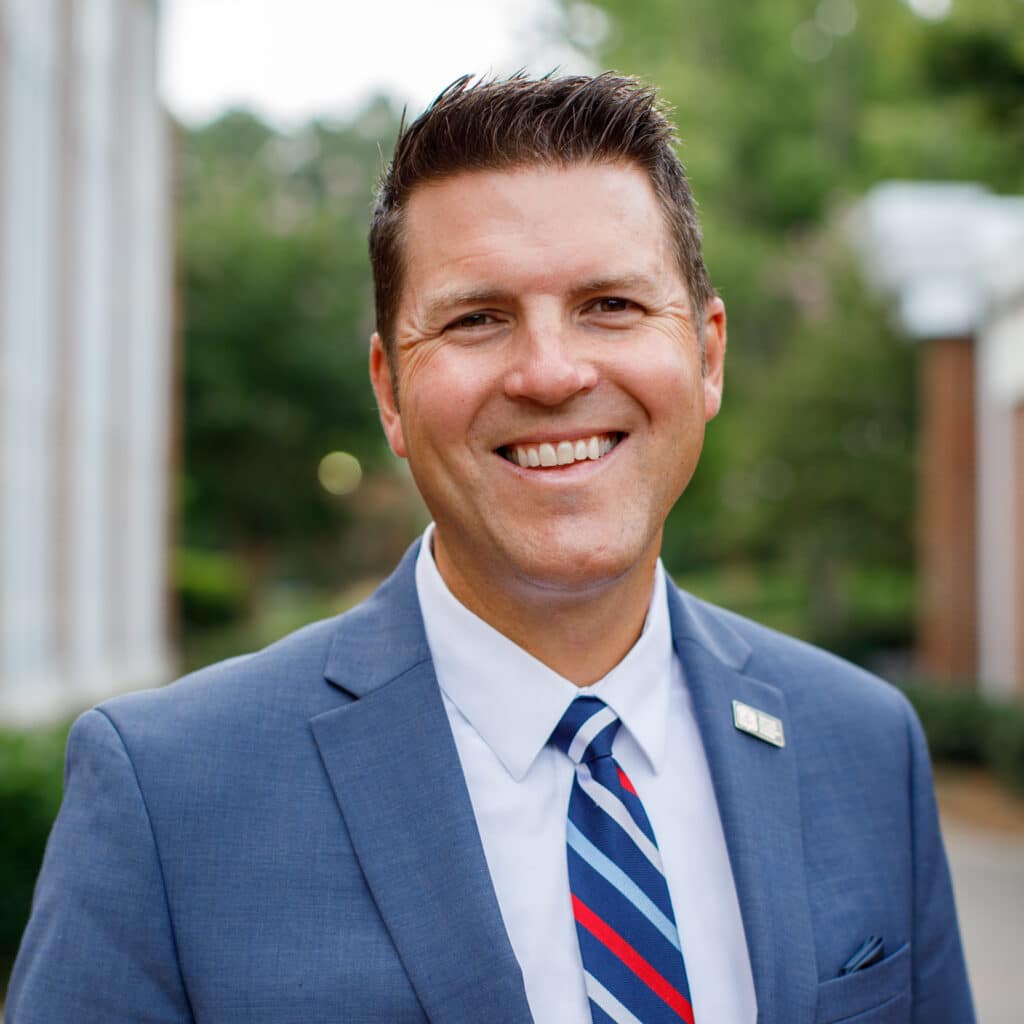
Glad You’re Here
by Craig Cooper and Walker Hayes
Glad You’re Here tells the true, redemptive story of country music singer Walker Hayes and his unlikely friendship with pastor Craig Cooper. In alternating chapters, each individual shares their unique perspective on pivotal moments in their friendship, and the book reminded me to prioritize the patient and persistent cultivation of community.
— Ann Cousins, Communications Director and Wesleyan School
The Boredom Experiment
Listen on Apple Podcasts
The Boredom Experiment, hosted by Jeremy and Ashley Parsons, is a short, heartfelt podcast series that documents and explores the effect of removing digital distractions and social media from their family’s lives for a year.
Over eight episodes, they share their experiences and insights into how this experiment impacts their creativity, relationships and overall well-being. The Parson’s storytelling thoughtfully weaves together interviews, music and their musings in such a creative, personal way that makes it an absolute delight to listen to.
The 1000 Hours Outside Podcast
Listen on Apple Podcasts, Spotify and Youtube
Digital Minimalism
by Cal Newport
Digital Minimalism advocates for a thoughtful and intentional approach to technology use. Newport argues that constant connectivity and digital distractions hinder productivity and well-being and encourages individuals to choose tools and habits that align with their values and long-term goals. In a digitally crowded world, this book was a needed reminder to be intentional with my time and strategic with how I use technology.
— Natalie Dettman, Creative Director at Wesleyan School
Sideline C.E.O.
by Marty Smith
While on this surface this book offers great wisdom from some of the most successful coaches of our time, it also provides a behind-the-scenes look at the lives of many people we admire.
From learning about Greg Sankey figuring out how to lead the SEC through Covid as he sat on his front porch to Mack Brown processing through how to lead his football team through racial tensions at UNC, you realize that these men [and women] are normal human beings that face the same difficult choices as the rest of us.
Not to mention, Marty Smith captures the lives and insight of these coaches in a fun, compelling way!
Practicing the Way
by John Mark Comer
New Kid
by Jerry Craft
Where Do We Go from Here
by Martin Luther King Jr.
— Joseph Antonio, Middle School Principal at Wesleyan School
West with Giraffes
by Linda Rutledge
This is lightly based on a true story. It is the story of moving giraffes who survived a hurricane, were rescued in the Atlantic, and were carried cross-country to the San Diego Zoo. It is well-written, and the character development is fantastic.
Crossing the country with two giraffes during the Depression created excitement in all the small struggling areas. The joy of those who had never dreamed of seeing a giraffe in real life will bring joy to anyone reading this book.
Housewives of True Crime
Listen on Apple Podcasts and Youtube
Moms and Mysteries
Listen on Apple Podcasts, iHeart Radio and Spotify
Southern Fried Crime
Listen on Apple Podcasts and Youtube
Wiser than Me with Julia Louis-Dreyfus
Listen wherever you get your podcasts
— Nancy Minor, The Nancy Minor Team
The Women
by Kristen Hannah.
A great read about the Army nurses in Vietnam.
— Laurie Rogers, The Nancy Minor Team
In The Woods
by Tana French
This book is a real page-turner. The author is a gifted writer, so even though it is a crime thriller, it reads like a novel. There are six books in the series, and I have read all of them.
Casefiles
Listen on Apple Podcasts and Spotify
This is a true crime podcast that has been around for several years. The stories are detailed and very interesting and cases are examined from all over the world.
— Shameka Allen, MBA, MA, CEO of Good Samaritan Health Centers of Gwinnett
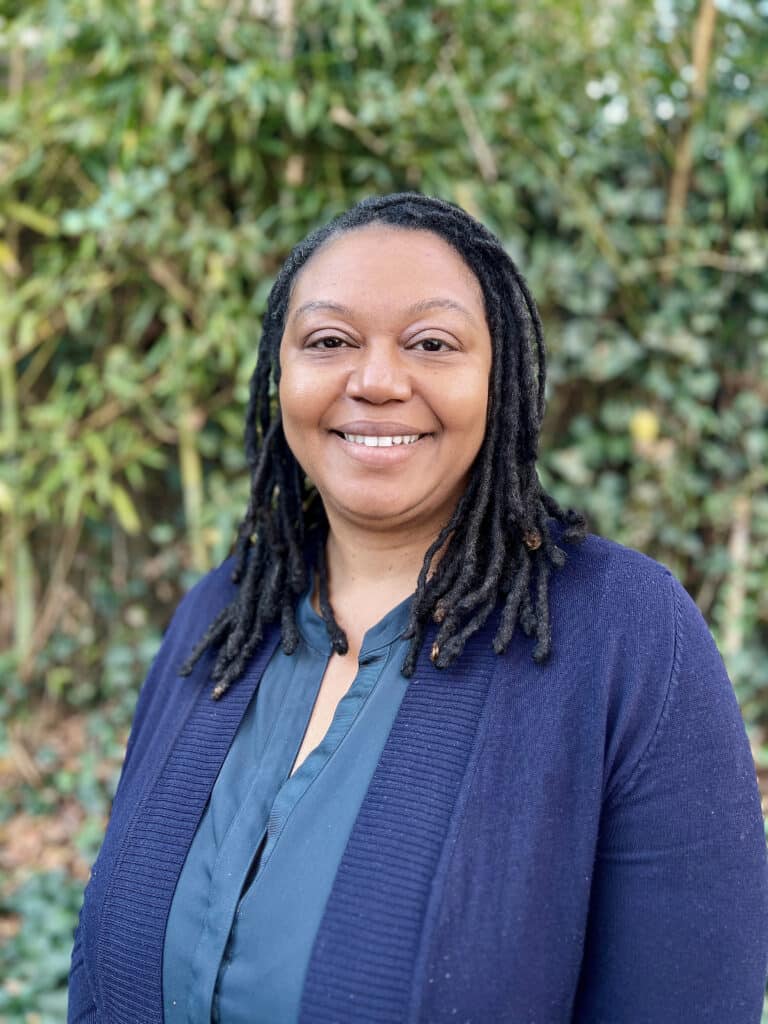
Over the Edge of the World
by Laurence Bergreen
Over the Edge of the World is a captivating account of Magellan’s expedition around the world. We all know Magellan’s name but few of us know the rich details behind the adventure and how it unfolded. I was inspired by the courage and bravery of those who took part in the great Age of Exploration.
Arrested Development
Stream on Netflix
This is easily one of our favorite shows. My wife, Meredith, and I have watched and re-watched it so many times and still find it so hilariously funny. The show blends clever writing with quirky characters and intricate, running gags. There’s always money in the Banana Stand!
Dr. Death
Listen on Apple Podcasts, Spotify and Wondery
This gripping true-crime podcast explores the shocking story of a dangerous surgeon. It’s a must-listen for its compelling narrative, deep investigative journalism and critical insights into medical malpractice and systemic failures. The podcast has since been made into a limited streaming TV series.
— Scott Hilton, Georgia State Representative
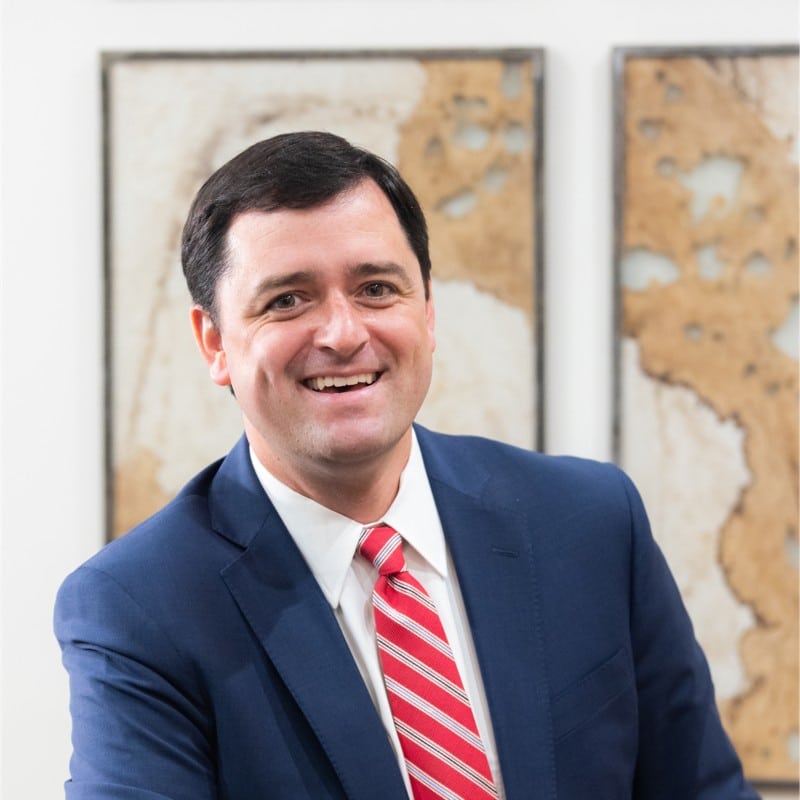
Sleep Wrecked Kids
by Sharon Moore
This book explains how inadequate sleep affects children’s growth, development and learning. This is a great guide to creating better sleep routines.
Healthy Sleep Happy Kid
by Meghna Dassani
This quick, easy read offers valuable insights into how sleep impacts a child’s health. It provides practical tips for improving your child’s sleep environment and habits and is a go-to resource for parents aiming to enhance their child’s sleep and overall wellness.
I can’t overstate the importance of good sleep habits for the overall well-being of your child and the entire household. Quality sleep is the foundation for happy, healthy kids and stress-free parents, setting the stage for the best possible summer with your family.
— Dr. Gia Grannum, Board Certified Pediatric Dentist of Agape Pediatric Dentistry
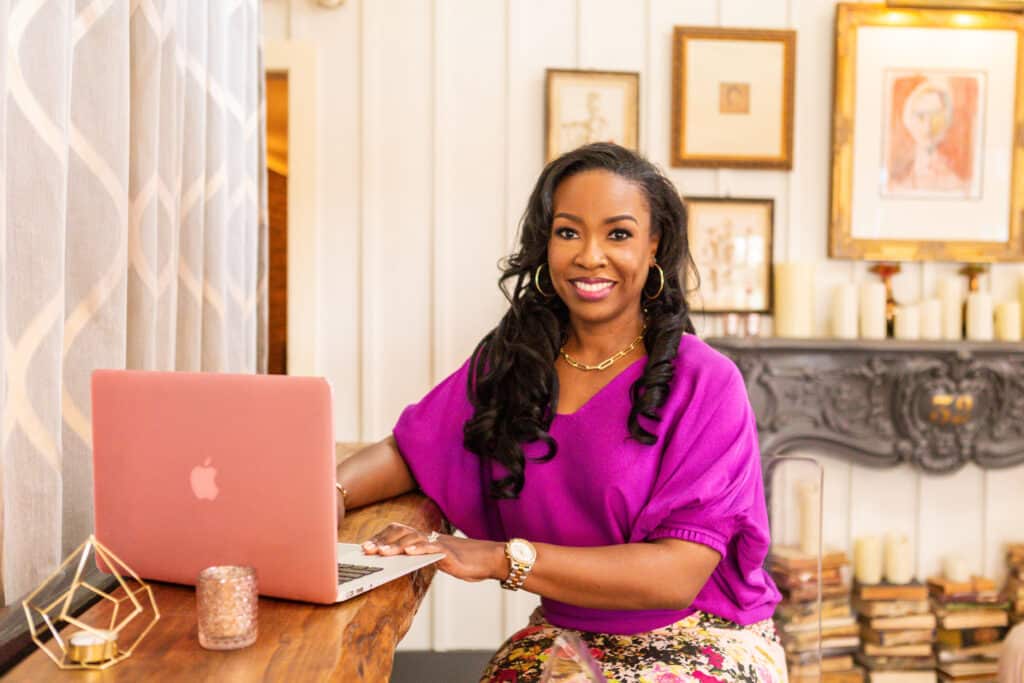
The Measure
by Nikki Erlick
I recommend The Measure by Nikki Erlick, which is about to come out in paperback! It’s a great pick for summer reading or a book club!
Poured Over, the Barnes & Noble Podcast
Stream on the Barnes & Noble website and Apple Podcasts
Check out the Poured Over podcast for interviews with your favorite authors, book recommendations for your TBR pile and more.
— Amanda Couch, Assistant Manager at Barnes & Noble at The Forum
Want even more recommendations? Check out last year’s list here.
Related
Read the Digital Edition
Subscribe
Keep Up With Peachtree Corners News
Join our mailing list to receive the latest news and updates from our team.
You have Successfully Subscribed!

What’s going on at Jones Bridge Park and the Challenges of Urban Development

Taste of Peachtree Corners: PCBA Showcases Local Restaurants

The Forum Gives Sneak Peek of New Eateries and Community Spaces

Southwest Gwinnett Mayors Share Visions for the Future

8 Events Happening In and Around Peachtree Corners This August

Peachtree Corners Shines Bright with Light Up the Corners Glow Race this August

Peachtree Corners Shines Bright with Light Up the Corners Glow Race this August

The Forum Gives Sneak Peek of New Eateries and Community Spaces

8 Events Happening In and Around Peachtree Corners This August

Southwest Gwinnett Mayors Share Visions for the Future

Taste of Peachtree Corners: PCBA Showcases Local Restaurants

What’s going on at Jones Bridge Park and the Challenges of Urban Development

Local Resident Opens AtWork Location in Peachtree Corners

CHRIS 180 Expands its Services into Gwinnett County [Podcast]

Light up the Corners [Video]

Capitalist Sage: Business Leadership in Your Community [Podcast]

Cliff Bramble: A Culinary Adventure through Italy

Top 10 Brunch Places in Gwinnett County

A Hunger for Hospitality

THE CORNERS EPISODE 3 – BLAXICAN PART 1

Top 10 Indoor Things To Do This Winter

The ED Hour: What it takes to Remove Barriers from Education
Peachtree Corners Life
Topics and Categories
Trending
-
Business1 week ago
Taste of Peachtree Corners: PCBA Showcases Local Restaurants
-
Business2 days ago
The Forum Gives Sneak Peek of New Eateries and Community Spaces
-
City Government4 days ago
Southwest Gwinnett Mayors Share Visions for the Future
-
Around Atlanta4 days ago
8 Events Happening In and Around Peachtree Corners This August



